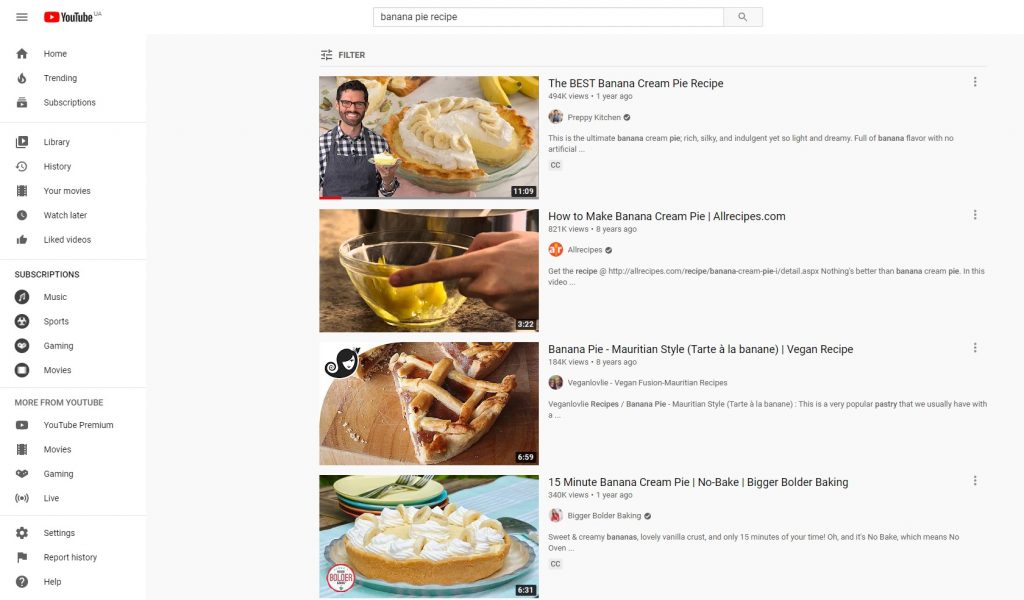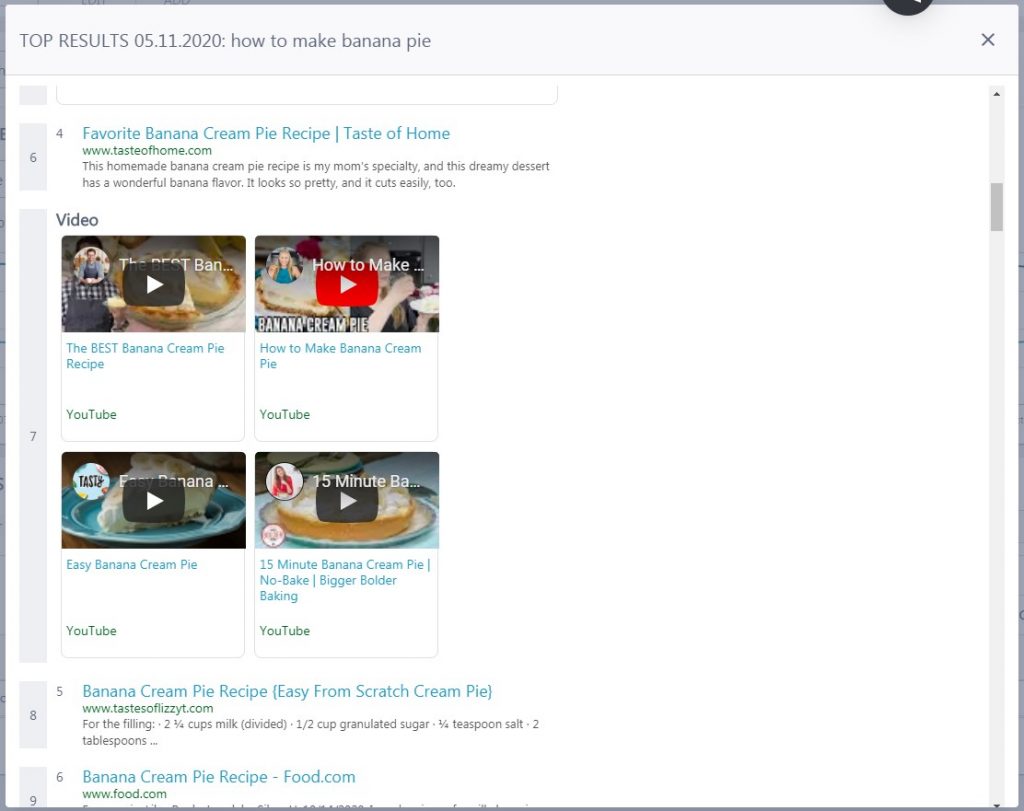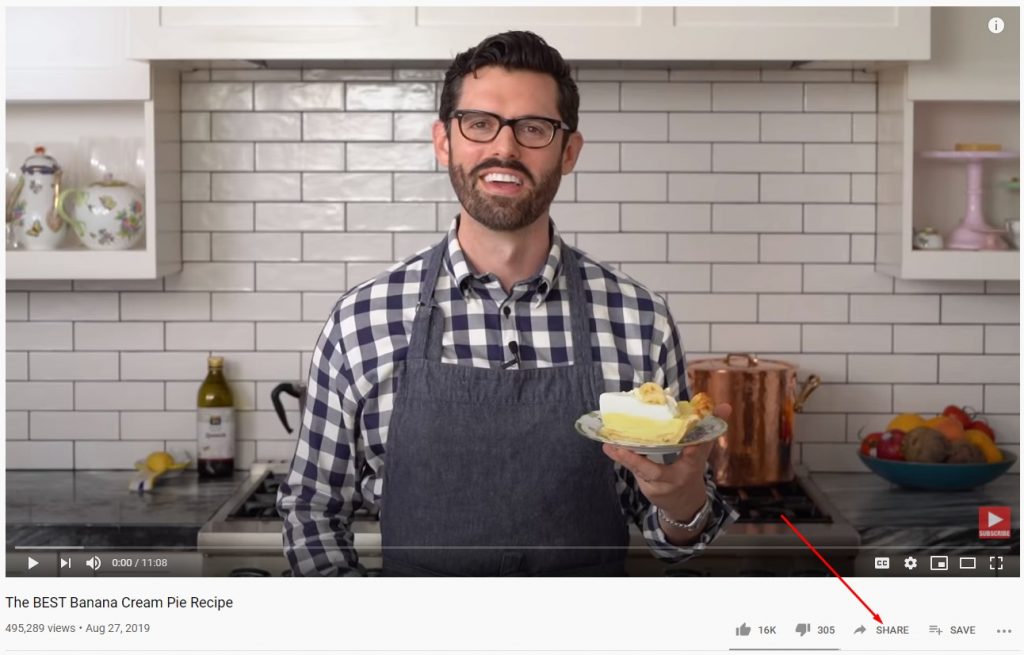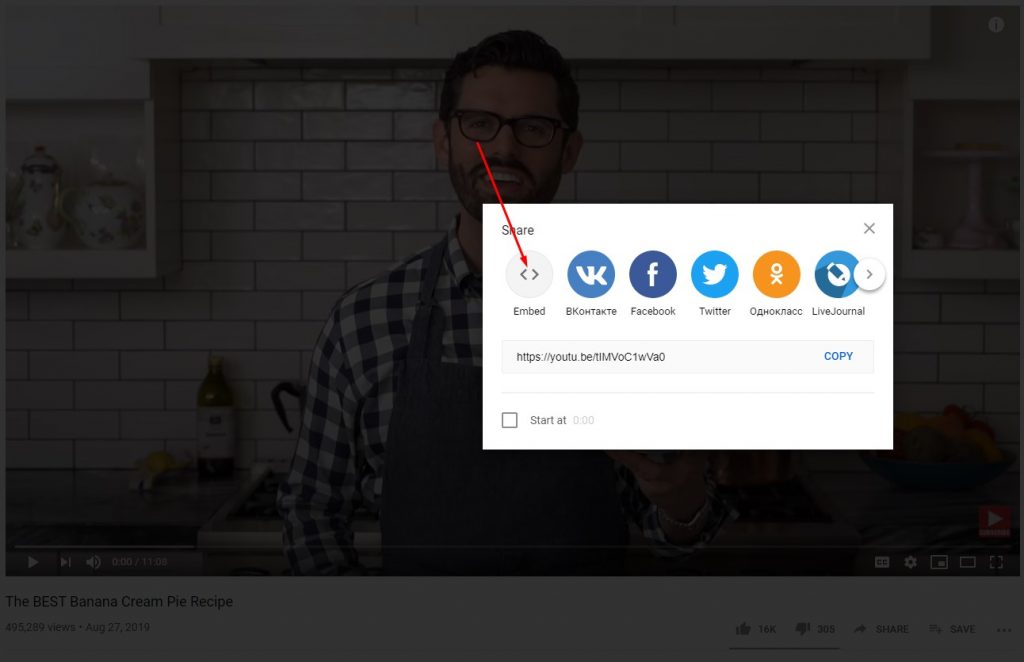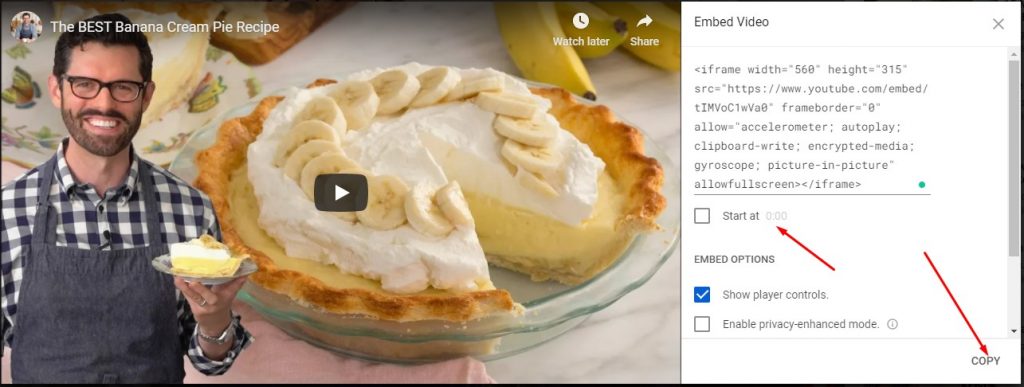How to Get Your YouTube Video Ranked in SERP
9 November 2020 Leave a comment ALL-HANDS SEO
According to DataForSEO’s list of most visited websites, YouTube is the fifth most visited website in the world. Just think of it: over 30 million people land on YouTube every day watching millions of hours of video. That’s one of the reasons why many business owners create YouTube channels and leverage video content to their advantage.
Whether your goal is to drive more traffic to your site, get plenty of views for a video blog, increase brand awareness, or boost sales, YouTube can definitely help you with that. However, this platform is extremely competitive, so getting yourself noticed will take lots of time and effort.
In this blog post, we’ll focus on how to get your videos rank high in Google’s SERP. We’ll walk through various important factors that may impact video rankings and provide you with useful tips on improving them.
But before we begin, you should know something.
Google’s and YouTube’s algorithms are different
Even though YouTube belongs to Google, its ranking algorithm is different from Google’s. To prove this point, let’s look at SERP and YouTube video results for the same keyword. We will be using the “banana pie recipe” query.
Here are the results in SERP:
And here is what you’ll get if you type that keyword on YouTube:
As you can see, the TOP1 results are the same, but others differ. For example, the video that is ranking second in SERP is ranking fourth on YouTube. The same situation is with other queries. That’s why we can safely say that Google and YouTube have different ranking algorithms.
However, if you analyze videos in SERP, you’ll notice that they are already popular on YouTube. It’s very unlikely that a video with few views and no user engagement on YouTube will be visible on Google’s results page. That brings us to another point — to rank a video high in SERP, you have to make it popular on YouTube first. And our useful tips may help you with that.
#1 Create an attractive thumbnail to increase a video’s CTR
When we decide what site to click on, we base our decisions primarily on titles and descriptions. However, for video content, the case is different. When we see a bunch of videos with similar titles, we tend to click on the ones with the most attractive thumbnails. That’s why it is so important to create custom thumbnails that catch a user’s eye.
Here is what YouTube says about this topic:
“Thumbnails and titles act like billboards to help viewers decide to watch your videos. Well designed thumbnails and titles can attract more fans to your channel, encourage viewers to watch through your videos because they know what to expect, and make your content appealing for a broad range of advertisers.”
And also:
“Thumbnails are usually the first thing viewers see when they find one of your videos, and 90% of the best-performing videos on YouTube have custom thumbnails.”
So how do you create an attractive thumbnail? Just follow these simple tips:
- Use contrast to your advantage. Try to avoid white and grey colors as they blend in with other search results. Use red, orange, green, blue, and other colors that contrast with white.
- Implement a human element. According to a recent study, thumbnails with a human element overperform those without it.
- Show progress. Previews with before/after results immediately attract users’ attention.
- Add text to your thumbnail. It’s one of the easiest ways to tell users what your video is about.
- Make sure your preview has the right size. YouTube recommends creating images with 1280 x 720 pixels resolution and an aspect ratio of 16:9.
- Apply the rule of thirds. This technique will help you focus viewers’ attention on the most important elements of your image.
- Use emojis. Emojis can help users grasp the overall mood of your video.
High-quality thumbnails will increase your video CTR. However, it’s not enough. It would help if you also made your videos discoverable for users.
#2 Find a video intent topic and use the right keywords
Before you even create a video, you have to decide what it’s going to be about. You should find a topic with traffic potential, the one that’s often searched on Google. It would also be great if this topic had video intent — that means people searching for some query would prefer watching a video over reading an article.
As far as we know, Google tends to show videos for:
- how-to keywords;
- product or service reviews;
- tutorials;
- sport-related content;
- any queries with “video” at the end.
Knowing this, you can easily find the right topic. Once the job is done, you have to add some keywords to your video. You should include the main keyword in the title, tags, and the first 150 symbols of description.
If you don’t know how to find the right keywords, read our article about keyword selection for SEO. It explains the process in an intuitive way and includes many illustrative examples. After reading it, you’ll learn how to collect thousands of keywords that you can later use to create video content.
To drive the most attention to your brand, we recommend making how-to videos. According to Google, “how-to” is the most popular category on YouTube — it’s even more popular than the “gaming” and “music video” categories.
Basing on this information, we can transform our “banana pie recipe” query into the “how to make a banana pie” and create a video that will attract viewers interested in cooking. We can then use RankActive’s Rank Tracker tool to see if there are any videos in SERP for that keyword. All we have to do is add the query to our project and go to the “Detailed View” section.
As you can see, there are some video results in SERP for our keyword. This tool has also provided us with search volume, competition, CPC, and other useful metrics.
If your YouTube channel is small, it’s a good idea to focus on keywords with a lower search volume as they’re usually less competitive. But note that Rank Tracker displays the search volume in Google, not on YouTube. To discover keywords search volume and competition on YouTube, use VidiQ or TubeBuddy Chrome extensions.
Rank Tracker will enable you to track if your video appears in SERP for any search engine and location. To see the results, choose the desired search engine, specify the location, and click on the “loupe” icon in the “Positions” section.
That way, you’ll get depersonalized results and will be able to track your video’s position manually.
You can also track your video’s position within Google’s “Videos” section. To do that, click on the loupe icon in the “Keywords” section:
After that, click Videos.
In this section, there are not only videos but also websites with embedded videos, so it’s a good idea to add video content to your website from time to time.
#3 Embed a video on your website
To kill two birds with one stone, you can write an article on some topic and also create a video about it. That way, you’ll have higher chances of driving more traffic to your site. For example, you can write a banana pie recipe and add video instructions to your article. In this case, people who search for the “how to make a banana pie” keyword and click on the “videos” section may notice your site (if it shows up there, of course).
Embedding a video is easy:
1. Go to the video you want to embed on your site and click Share.
2. After that, click Embed.
3. Specify the starting time and click Copy.
4. Paste the code into your website HTML.
After that, your video should appear on the website. Note that results in the “Videos” section have a strong correlation with overall results. That means if your website is ranking high for the “how to make a banana pie” keyword in the “All” section, it is most certainly ranking high within the “Videos” section.
Now let’s get back to the video optimization process. If you look through videos that are ranking high in Google’s SERP, you’ll notice that all of them have great user engagement. That’s why you should do your best to make your content appealing to viewers.
#4 Increase your videos’ user engagement
User engagement is a set of crucial metrics used by YouTube to determine a specific video’s or channel’s overall popularity. As you may already know, one of the ways the platform makes money is by selling ad spots to advertisers. To make these ads effective, YouTube needs to ensure its viewers are engaged with the content they watch. As a result, videos with great user engagement are getting more views and have higher chances to appear in Google’s SERP.
There are many user engagement metrics you should start tracking:
- Likes, dislikes, and comments. These metrics indicate your viewers’ feedback to the video content you produce. The higher the number of likes, comments, and even dislikes, the better. No reaction at all is a bad sign — videos that lack it don’t usually get many views.
- User retention. This metric defines how much viewers are engaged with your content. You can measure user retention by looking at the Engagement metric in YouTube Studio. There you’ll find a graph showing you which parts of your video are the most and the least interesting to the users. You can then analyze your content and do your best to make it more engaging.
- Watch time. Watch time relates to user retention. This metric shows the average time viewers have spent watching a particular video (or all the videos on your channel). If you create long video content, it’s a good idea to make its average watch time as high as possible.
- Social shares. Social shares may be used to indicate your videos’ overall quality. It’s unclear how YouTube treats them; however, many bloggers recommend to get your content shared on social media, especially within the first few hours after posting it.
- Average views per viewer. This metric indicates your channel or certain video quality. If viewers visit your channel and rewatch your content, it’s a good sign because it means your videos are engaging and helpful.
- Gained and lost subscribers. This metric shows how many people subscribed to or unsubscribed from your channel after watching a specific video. It’s one of the clearest indicators of the quality of your content.
Now that you’re aware of user engagement metrics, it’s time to learn how to improve them. To engage your viewers, consider the following:
- post videos regularly as viewers tend to subscribe to active channels;
- add calls-to-action at the end of them: ask your audience to subscribe to your channel, leave likes and comments, and hit the “bell” button;
- respond to users’ comments on time;
- run contests regularly: that way, you’ll gain more comments and subscribers;
- add timestamps to the description of each video so viewers can easily find the parts they’re interested in;
- collaborate with other bloggers (that way, you can draw some subscribers from their audience).
If you manage to improve your channel’s user engagement, more views and subscribers won’t take long to come.
Conclusion
Don’t be scared of YouTube. Even though it’s challenging to rank videos high there, it doesn’t mean you should never try. There are many cases when even low viewed videos convert well and bring their creators some extra money. So why not try?
If you want to have better chances to rank your videos high on YouTube and in Google’s SERP accordingly, implement the tips from our blog post:
- create attractive thumbnails, so users choose your videos among others;
- find a topic with a video intent and include the main keywords in the title, tags, and the first 150 symbols of description;
- embed your YouTube video to your site to have higher chances to appear in the “Videos” section;
- make sure your content is engaging so YouTube can recommend it to a wider audience.
Also, don’t forget to use RankActive’s tools to track your videos’ positions for any keyword, search engine, and location.
Tags: How to Get Your YouTube Video Ranked in SERP, how to rank a video in Google's Serp, How to rank on youtube, Rank Tracker, RankActive, youtube
Like this article? There’s more where that came from.
- 5 Questions to Ask Yourself Before Paying for Rank Tracking Software
- 5 Serious Mistakes Beginner SEOs Make and How to Fix Them
- Why We Use Google’s New Link Attributes and You Should Too
- Title and Description in 2021: Why Google Rewrites SEOs’ Meta Tags
- What We Should Learn From Google’s “About This Result” Feature



